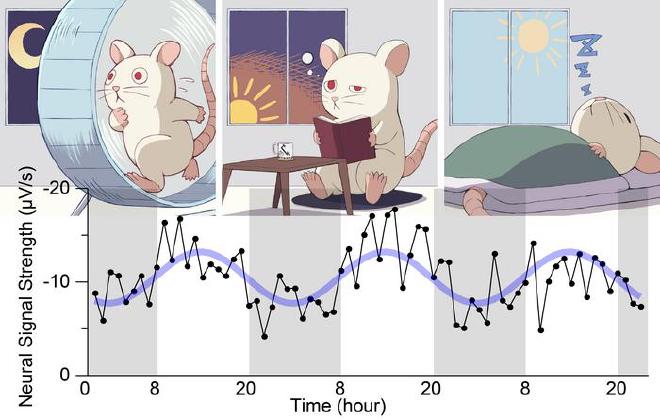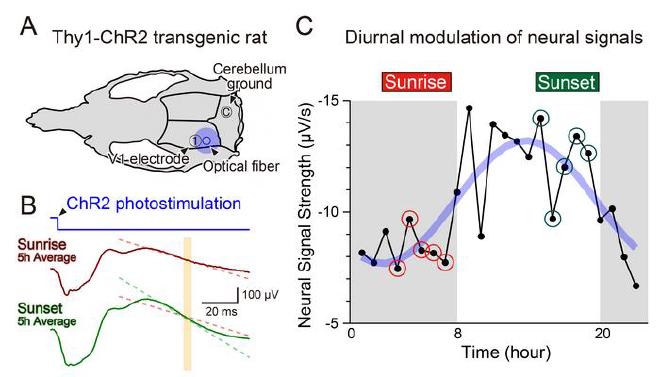

The 24-hour cycle that humans naturally follow is one of the factors that shapes the brain’s internal environment. These internal physiological cycles arise from the interplay between the body’s intrinsic circadian clock and the external light-dark cycle that synchronizes it. Yet how such daily fluctuations influence brain chemistry and affect neuronal excitability and plasticity has remained largely unknown. Now, researchers at Tohoku University have directly observed time-of-day-dependent changes in neural signal responses in the brains of nocturnal rats. The findings were published in Neuroscience Research.
Is adenosine the key? #
To explore the underlying mechanism explaining why this was occurring, the researchers looked at adenosine, a neuromodulator that accumulates during wakefulness and makes us feel sleepy. When the researchers blocked the action of adenosine, neural activity at sunrise became disinhibited and enhanced, showing that adenosine helps regulate cortical excitability across the day.

Long term potentiation #
The team also examined whether the brain’s capacity for long-term potentiation (LTP), a cellular basis of learning and memory, changes with time of day. This represents the brain’s potential for metaplasticity (the brain’s ability to adjust how easily its networks change). Remarkably, repetitive optical stimulation induced LTP-like enhancement at sunrise, but not at sunset. This was unexpected, as it suggests that although sleep pressure and fatigue peak at sunrise, the brain’s metaplastic potential is heightened at this time. These findings indicate that the brain’s ability to reorganize itself follows a daily rhythm, with specific periods more favorable for learning and adaptation.
“These results imply that our brains have temporal windows that favor adaptability,” explained lead investigator Yuki Donen. “Knowing when the brain is most receptive to changing could help optimize training, rehabilitation, and stimulation-based therapies.”
The study reveals how daily rhythms fine-tune the balance between excitability and plasticity in the cortex. Because adenosine levels and sleep pressure follow circadian patterns, this mechanism may synchronize brain adaptability with behavioral cycles such as rest and activity. The research provides new insight into how the brain coordinates energy use, neural signaling, and learning capacity across the day.
Citation #
-
The study Diurnal modulation of optogenetically evoked neural signals was published in Neuroscience Research. Authors: Yuki Donen, Yoko Ikoma & Ko Matsui
-
The article The Flexible Brain: How Circuit Excitability and Plasticity Shift Across the Day was published today on the University of Tohoku’s website
Contact [Notaspampeanas](mailto: notaspampeanas@gmail.com)

